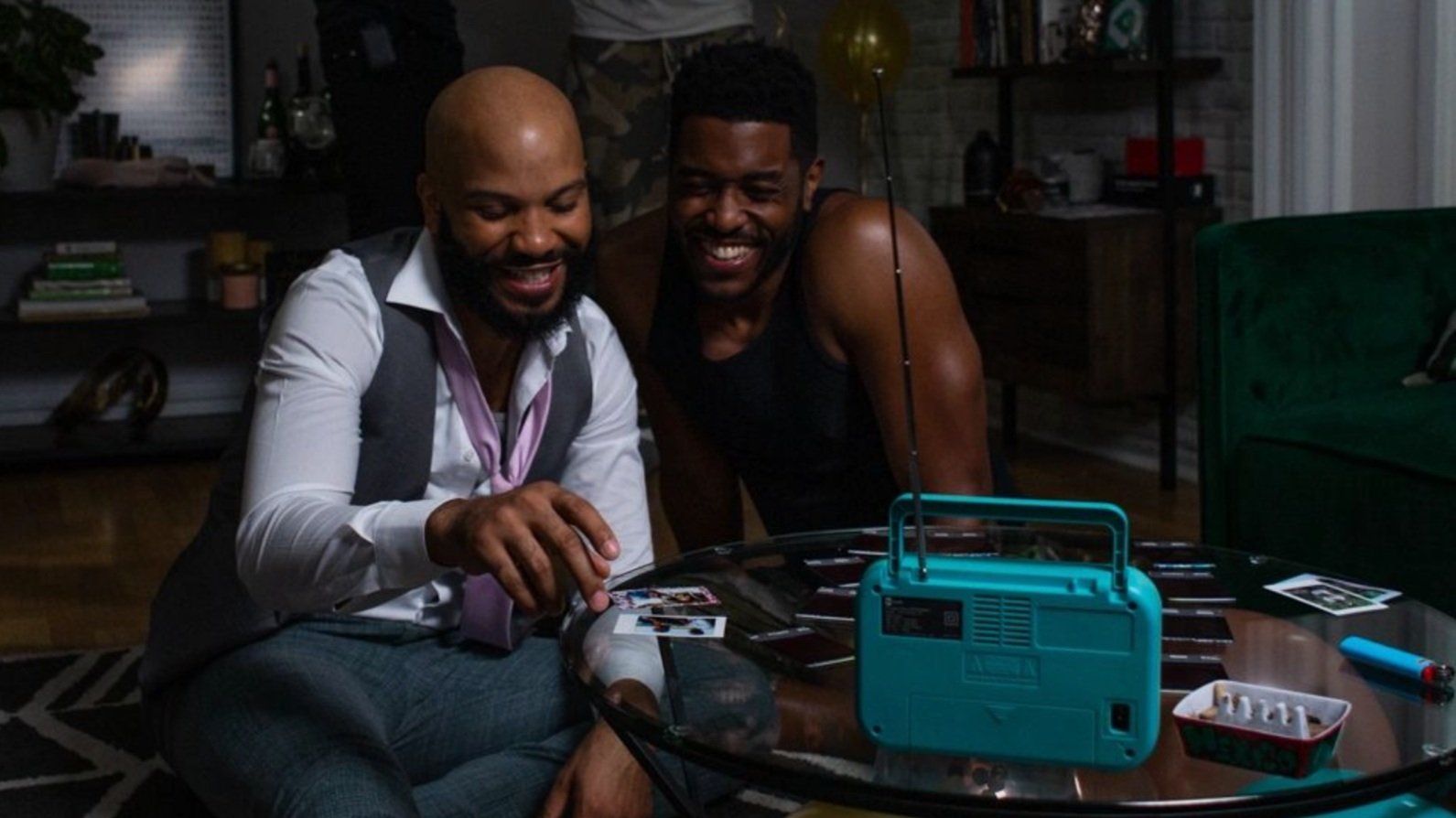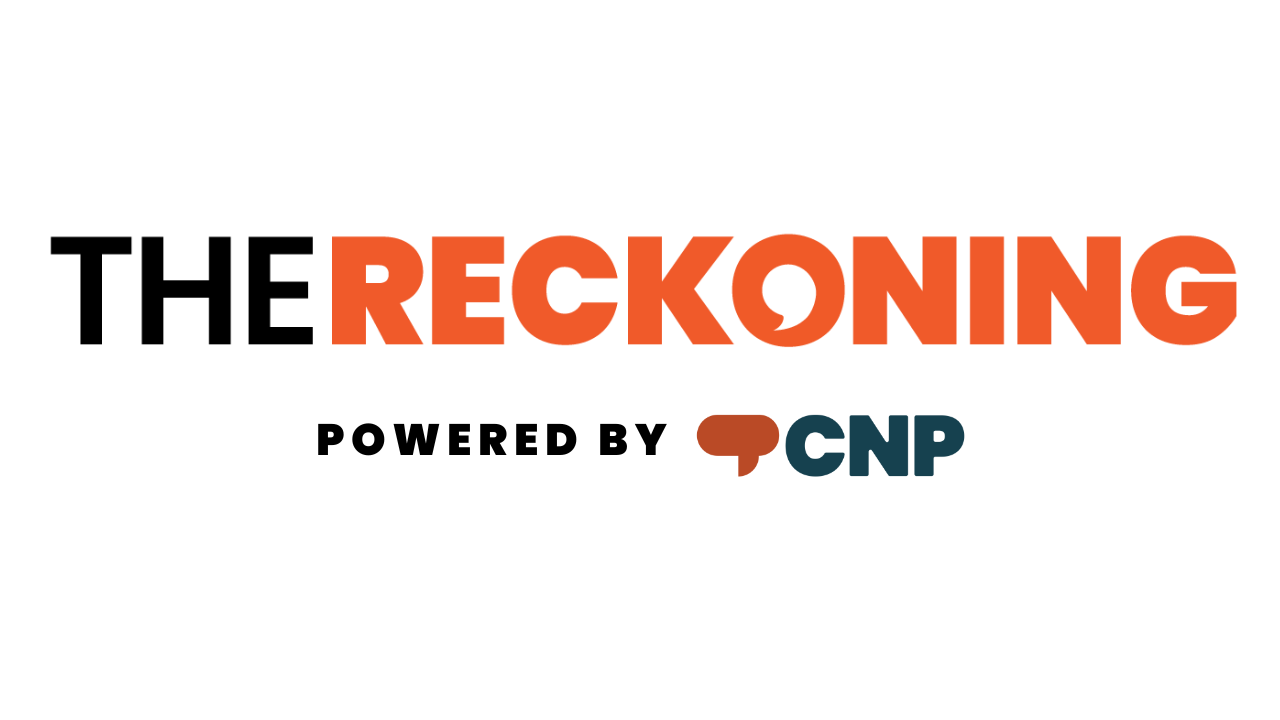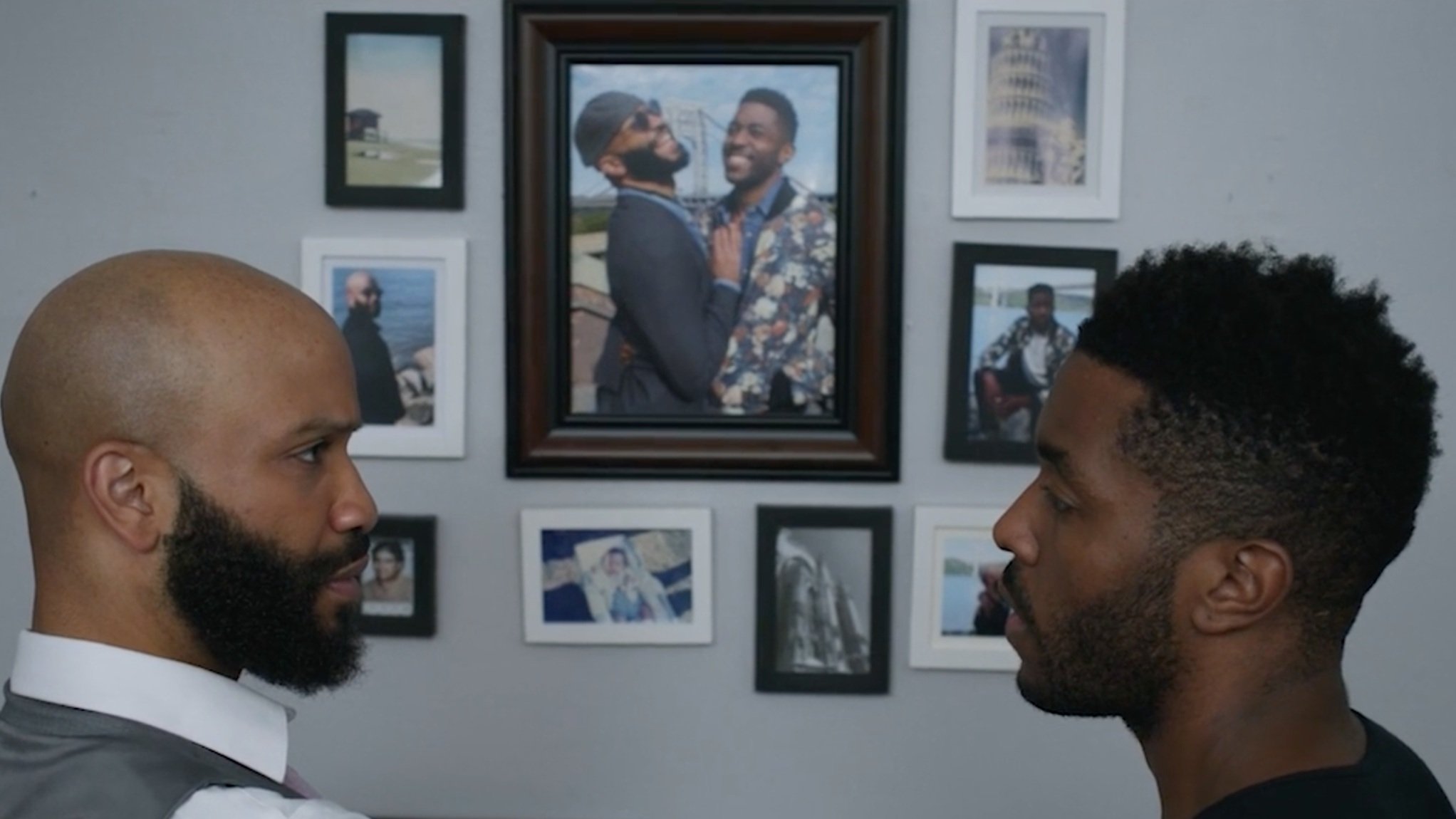Black Queer Filmmaker Brings Shattering Romance ‘Nana’s Boys’ to Out On Film

Ashton Pina (Image courtesy of subject)
For just about everyone, year one of the Coronavirus pandemic bought both losses and gains. Self-described “outrageous storyteller” Ashton Pina was no exception: Starting the lockdown as an up-and-coming communications professional in a committed relationship, the queer storyteller ultimately ended the first chapter of the Covid crisis as an unemployed, single man.
From those losses, however, came one tremendous gain—the framework for a cinematic exploration of love and transition that, until recently, had only lived in his very creative head.
The fruit of his journey materializes in “Nana’s Boys,” a feature-length film – his first – set to make its local debut at Out on Film in Atlanta this month. In it, Pina explores themes of beginnings and endings, artifice and reality, hope and despair, all against the backdrop of a seasoned relationship between two Black gay men.
The opening scene of “Nana’s Boys” is an idyllic one. The sun peeks into a cozy, upscale New York apartment, gradually waking one of two attractive 30-something men from the last fleeting moments of rest. That man, Q (Jared Wayne Gladly), cheerfully begins making breakfast and kicking off what looks like a beautiful, privileged day.
How quickly things change.
The audience soon learns it is a milestone birthday for the younger of the two, Amari (David J. Cork), and he’s not happy about it. As partner Q, a rising attorney, chirps about the house laying out plans for a perfectly curated birthday celebration, the first glimpses of tension emerge.
Just as the pair seem to settle back into their ongoing façade of peace, an explosion outside literally drags them back inward and, soon thereafter, hurtling through a series of emotional ups and downs that neither they nor the audience could have seen coming.
The film is one of just under two dozen films made by or featuring BIPOC central characters in the largely white-centered film festival and coincides with a media shift that’s seeing multi-dimensional Black queer portrayals expanding faster than ever. The seeming transformation, say insiders, comes as more LGBTQ+ people of color gain access to writing rooms and other places where they can shape a new narrative.
For Pina, “Nana’s Boys” is as much about portraying the diversity of Black queer people as it is showing the complexity of their love.
“It was very important to me to have this type of portrayal because the media has been denying Black love on screen for far too long,” says Pina, 33. “Art is a reflection of society, and we deserve to be represented and seen in the many dimensions in which we exist.”
“It was very important to me to have this type of portrayal because the media has been denying Black love on screen for far too long. Art is a reflection of society, and we deserve to be represented and seen in the many dimensions in which we exist.”
- Ashton Pina
Unlike many film and tv offerings historically aimed at queer audiences of color, the film eschews stereotypes and melodrama. There’s no harried coming-out angle, violence, or steamy sex scenes. Indeed, the entire movie takes place in just two spaces.
Within them, however, Pina takes an almost surgical approach to examining in detail what happens when sudden circumstances force a couple to unfold the layers of their relationship, painfully determining what’s real and what isn’t.
“I wanted to show the dichotomy of love and how one is ending and how one can be built,” says Pina, who describes the theme as a “shattering romance.” “I want to drop into these characters over different time periods similar to the Before trilogy by Richard Linklater.”
The result is a film both shockingly simple in its subject matter and fascinating in its complexity and ability to make the audience self-reflect. What lurks beneath the surface of my relationship? How fragile is what we’ve built? What can “we” handle? Viewers wonder how sure they are of the answers by the film’s end.
Screen capture from Nana’s Boys
A Long Labor of Love
As films go, the creation of “Nana’s Boys” moved at breakneck speed: Working mainly in his own Manhattan, NY apartment, Pina shot the 78-minute feature in just 11 days, over two months.
However, the journey toward its creation was a far longer tale involving cross-country moves, false starts, and a failed chemistry class.
“I’ve been trying to make a feature for about five years,” Pina recently told The Reckoning from his home in Puerto Rico.
Pina grew up with his mom and two brothers, first in Massachusetts and later in Florida. As a youth, he felt free to explore his entertainment side, becoming the captain of a step team and eventually even a drag performer. But bowing to external expectations, Pina eventually steered to more conventional pursuits, landing in an Orlando-area community college on a track to becoming a doctor.
That all changed with one fateful class.
“I was studying Pre-Med because that’s what I thought would make my family happy,” says Pina, a lifelong academic who, upon failing chemistry, started rethinking his path. “I stopped living for my family and started living for me and for what brings me joy. I learned that’s what really made my family happy.”
“As we get to see more and more of the different depths of the characters that exist in this world, more people are going to be seen. I love to create characters that can exist and do exist.”
- Ashton Pina
By 2017, Pina knew he wanted to expand into a full-length project. But wanting something doesn’t make funding materialize, and Pina soon learned that creating a short film was no longer the automatic fast-track to studio funding it once was. He realized he had to improvise.
“I’ve never been a person to wait around for permission,” he says. “Over the years, I had the degrees, invested in equipment, and had a small but mighty network to make something happen.”
That network included family and friends giving gifts, cash, and in-kind gifts of time and supplies. Pina also saved whatever he could from his job as a communications director for a Brooklyn-based chocolate firm. Things were chugging along well in early 2020; Pina had just returned from a company-sponsored research trip in Madagascar. Then Covid hit. Pina was laid off and his relationship, at the time with a woman, began to unravel. Everything changed in the blink of an eye, forcing Pina to think on his feet and adjust.
“Relationships are roller coasters. Living is a rollercoaster. When you put the two together, you’re in for one hell of a ride,” he says. “I think the ride is always worth taking.”
The arc of disappointment and hope in “Nana’s Boys” closely resembles the course of Pina’s own ill-fated relationship.
“I think the film prepared me to deal with the feelings of loss and abandonment,” he says. “There was a sense of freedom and a jolt of energy that losing both of these things invigorated in me.”
Actor Jared Wayne Gladly as “Q” (Screen capture from Nana’s Boys)
In addition to being an ode to Black queer relationships, Pina considers the film a love letter to Black women. Not only was the film edited by a Black woman, but their grandmothers raised both Q and Amari, affectionately referred to as “Nana” and referenced via cell phone calls and memories throughout the film.
Though neither appears on the screen, they offer wisdom and wield influence from afar, echoing the real-life hand women of color often play in shaping how many queer Black men like Pina move through the world.
“Black women have always shown up for me,” he says. “Which is why ‘Nana’s Boys’ is ‘Nana’s Boys.’”
Pina says he remains committed to more nuanced tellings of the experience of Black love. Such depth, he says, helps people of color show up more in Hollywood and the world in general.
“As we get to see more and more of the different depths of the characters that exist in this world, more people are going to be seen,” he says. “I love to create characters that can exist and do exist.”
Editor’s Note: “Nana’s Boys” makes its Atlanta debut on September 28, 2022, at Landmark Midtown Art Cinema, with a digital version previously released.
Dionne N. Walker is an Atlanta-based reporter with over a decade of experience. Walker offers a distinct voice and unique skill for capturing the stories of diverse communities, perfected while writing for The Associated Press, The Capital-Gazette (Annapolis), and a variety of other daily publications throughout the Southeast. When she’s not writing features, Walker is busy traveling, crafting, or perfecting her vinyasa yoga skills.




